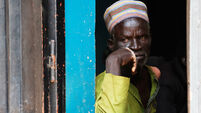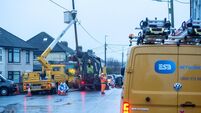Flashfloods and landslides kill 200 in Sri Lanka
“It is a very grim situation,” rehabilitation minister Jayalath Jayawardene said. “I have been told that at least 200 people have died and still there are people unaccounted for.”
About 150,000 people have fled their homes in the affected areas and are being housed in temples, schools and public buildings. Officials in Ratnapura, Hambabtota and Matara districts said about 100 bodies had been recovered so far. The death toll was expected to rise.














